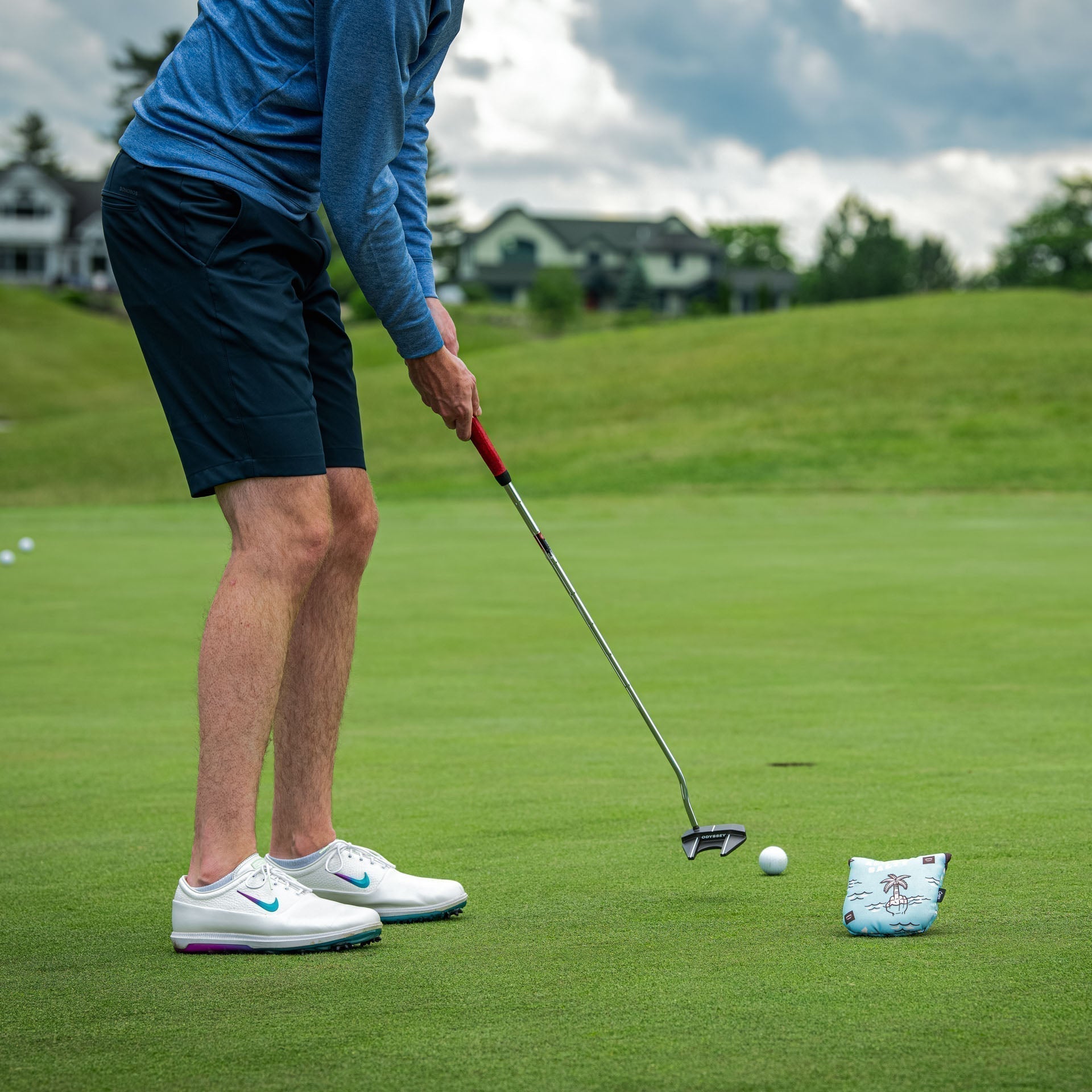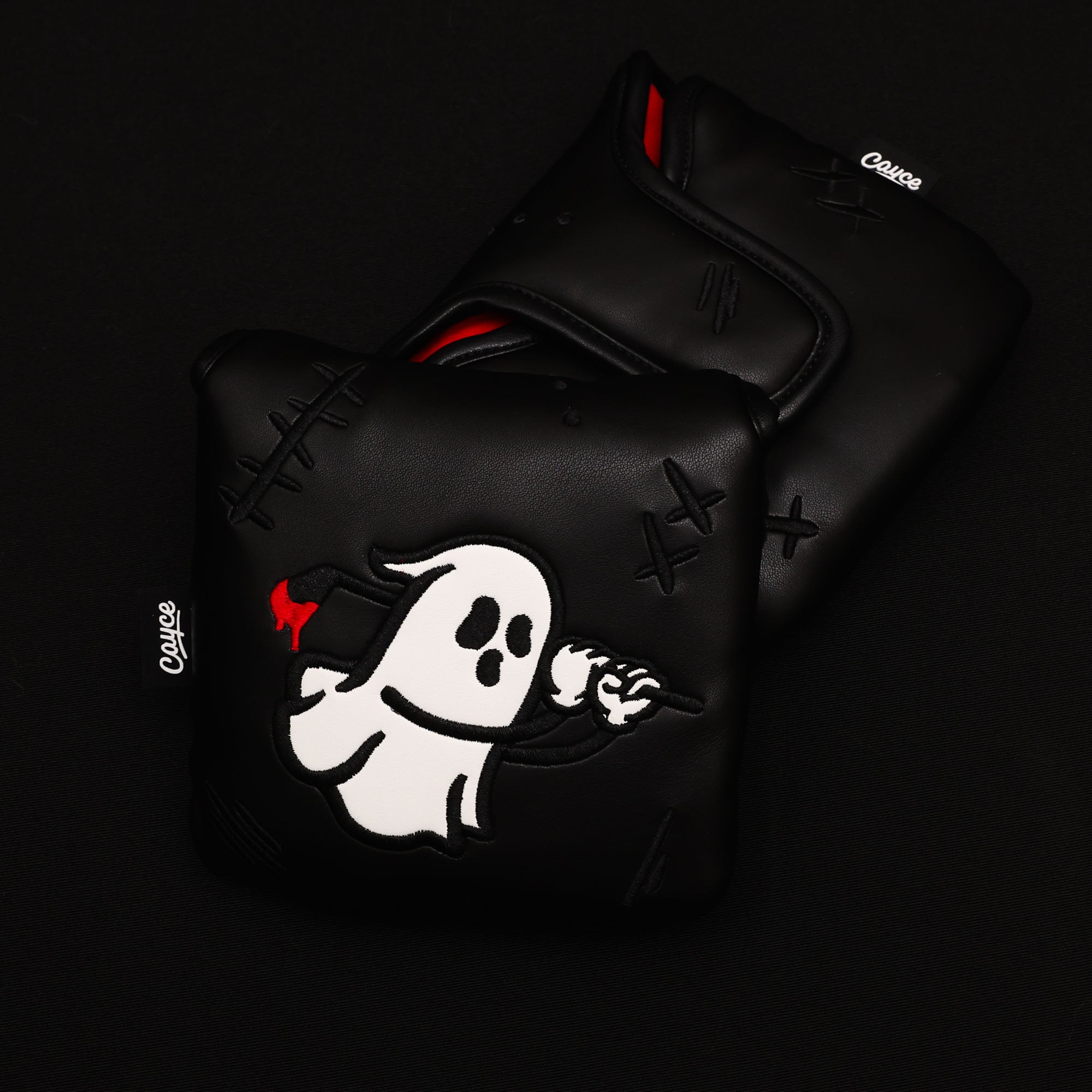TLDR: DEET is a solvent. And solvents don’t just confuse mosquitoes—they literally eat away at materials.
Golf in the summer is great—until the mosquitos come out. You’re standing on the 14th tee, sun dropping low, breeze gone, and the bugs find you. Most of us do the same thing: grab a can of bug spray, give ourselves a good misting, and get back to the round. Problem solved, right?
Not always.
One of our customers reached out recently with a problem: his custom headcover design had smudged and rubbed off. At first, it sounded like a printing issue. But after digging into it, we realized the real culprit wasn’t a bad batch of ink or vinyl. It was bug spray. Not just any bug spray—a 98.5% DEET formula (to be exact: Deep Woods Sportsmen Insect Repellent Spray Bottle by OFF!).
To see for ourselves, we sprayed DEET onto a headcover and rubbed it with a finger. The design wiped right off. Just like that.
This is a good reminder for all of us to think twice before spraying chemicals all over our body and gear. Let’s talk about why.
What is DEET, Really?
DEET (N,N-diethyl-meta-toluamide if you like the chemistry stuff) was created by the U.S. Army back in the 1940s to keep soldiers safe from insect-borne diseases. It became available to civilians in the ’50s and has been the gold standard for mosquito repellent ever since.
Here’s the thing: DEET doesn’t kill bugs. It works by scrambling their radar. Mosquitoes find us by detecting carbon dioxide and lactic acid. DEET blocks their sensors so they can’t lock onto you as a target.
The problem is, DEET is also a solvent. And solvents don’t just confuse mosquitoes... they eat away at materials!
Why DEET Ruins Golf Gear
Think about what your gear is made of: synthetic leather, printed vinyl, polyurethanes, rubber grips, coatings on fabrics. DEET doesn’t care... it melts, smudges, and weakens all of it.
Here’s what it can damage:
-
Synthetic leather headcovers: designs smear right off.
-
Golf bags: DEET softens coatings and leaves shiny, melted-looking spots.
-
Grips: it makes them gummy or slick.
-
Rangefinders, sunglasses, GPS screens: plastic housings and coatings can haze or warp.
So if you spray your arms and then grab your driver, you’re basically transferring solvent right onto your gear.
A Real-World Course Example
Picture this: you’re mid-round, mosquitoes are hammering you, so you spray your arms, legs, and neck. You grab your club, sling it back into the bag, and keep playing.
Hours later you notice a smear on your headcover. A few days later, your grips feel sticky. By then, the damage is already done.
⚠️ The higher the DEET concentration, the faster this happens. A 30% spray might slowly wear down materials. A 98.5% spray acts like paint thinner on contact ⚠️
Why Golfers Should Care
We spend time and money building out our golf setups. Maybe you’ve got custom headcovers. Maybe your bag was a birthday gift or a limited edition drop you hunted down. You don’t want to see it ruined by a quick blast of bug spray.
Beyond looks, there’s performance too. Sticky grips, weakened straps, warped plastics—all can affect your comfort and even your swing. Not to mention putting what is essentially paint thinner on your SKIN!
Smarter Ways to Keep Mosquitoes Off
So how do you protect yourself without wrecking your gear?
-
Stick to lower concentrations. You don’t need 98.5% DEET on the golf course. 15–30% works just fine for several hours.
-
Apply before the round. Spray away from your clubs, outside the car, and let it dry before you touch your gear.
-
Use lotion instead of spray. Creams give you control without the overspray.
-
Look at alternatives. Picaridin, oil of lemon eucalyptus, or IR3535 are effective and much gentler on synthetic materials.
-
Wipe down after. If you do use DEET, make it a habit to wipe grips and gear after the round with a damp cloth.
The Takeaway
DEET works. No question about it. But it also eats synthetic materials alive. That doesn’t mean you should never use it—it just means you need to be smarter about how you apply it.
Think before you spray. Protect your skin, but protect your gear too.
Because golf should be about birdies and bogeys—not melted headcovers.
Quick Golfer’s Checklist
✅ Don’t use 98% DEET sprays on the course
✅ Apply bug spray away from your clubs and let it dry
✅ Try lotions or lower-concentration formulas
✅ Consider alternatives like picaridin (Staff Pick)
✅ Wipe down grips and gear if DEET does make contact
Let me know what you think! After all this, I am questioning whether or not I want DEET on my skin at all.



